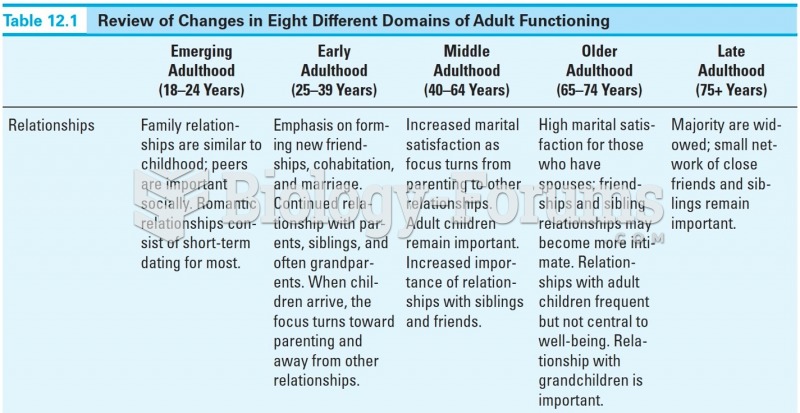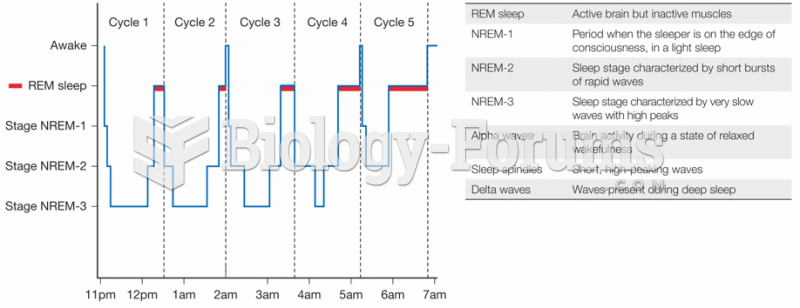Answer to Question 1
The McLeods are trying to have their son involuntarily confined for treatment. This is called civil commitment. Although states vary in the criteria they use to commit individuals, there are general standards. In addition to being mentally ill, Brewster must be found to be (a) presenting an imminent danger to himself or others (suicide or homicide), (b) unable to provide for himself sufficient food, clothing, and shelter to live without danger, (c) unable to make responsible decisions about treatment so that severe deterioration is likely, or (d) in such an unmanageable state of panic that he will lose all control. It is important to note that all of these criteria involve judgments and, in many cases, predictions must be made about future behavior including dangerousness to self and others.
The law recognizes that involuntary hospitalization means depriving a person of his or her liberty despite the fact that no crime has been committed. The person's due process rights are protected in several ways. First, commitment can occur only through a court when the judge believes there is reasonable cause for such action. In Brewster's case, the judge would appoint two mental health professionals with no connection to each other so that Brewster could be evaluated with as little bias as possible. After Brewster was examined twice, a formal hearing would be held before the judge, at which point testimony would be given. Brewster would have a lawyer to represent him and would be allowed to speak for himself. If the judge determined that Brewster needed treatment, he or she would have to be 75 percent sure that Brewster was mentally ill and dangerous, according to the Addington v. Texas decision. Addington noted that while this was lower than the 90 percent certainty of beyond a reasonable doubt used in criminal cases, it was a higher standard of proof than that advocated by most mental health organizations. Further, the judge would either specify the time Brewster would be in treatment (usually less than one year) or declare that there be periodic review and assessment of his need to be in treatment.
Answer to Question 2
Criminal law is based on the assumption that criminal behavior is freely chosen and the responsibility of the person who commits it. If, because of mental illness or intellectual disability, a person is not able to control his or her behavior or appreciate that what he or she is doing is wrong, that person should not be held as responsible as someone who has such control and understanding. One of the first cases to make this distinction was in 1843, when Daniel M'Naghten attempted to kill the British prime minister. Because he was quite delusional, M'Naghten was found not guilty by reason of insanity. At the time of the crime, he did not know right from wrong. This is a strictly cognitive standard for deciding insanity. A second major standard that developed was the irresistible impulse test. This says that defendants are not responsible if they cannot control their behavior.
In 1954, Judge David Bazelon ruled in Durham v. United States that defendants are not responsible if their behavior is the product of a mental disease or defect. This so-called products test or Durham standard put considerable influence in the hands of mental health professionals, who, as experts, could testify as to whether a mental illness existed and whether it produced the criminal behavior. Eventually, Bazelon himself withdrew his support for this position.
In 1962, the American Law Institute (ALI) produced guidelines to help jurors judge insanity. This code says that if, due to mental disease or defect, a person lacks substantial capacity either to appreciate the criminality of conduct or to conform conduct to the requirements of the law, the person is not responsible. Antisocial personality disorder was specifically excluded from the mental diseases or defects that might apply. The ALI code supported both the M'Naghten and irresistible impulse tests. In 1982, John Hinckley was found not guilty by reason of insanity when he was tried for attempting to assassinate President Ronald Reagan. The outrage that followed this verdict led to the Insanity Reform Act of 1984, which bases insanity totally on the M'Naghten cognitive standard. Still, some states have adopted alternative pleas, most of which involve a merging of guilt and disorder such as guilty, but mentally ill. Despite attempts at reform, the insanity tests vary widely, and the use of the insanity plea remains controversial.







